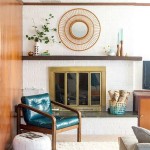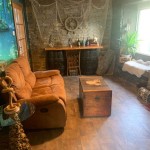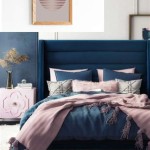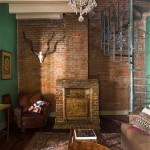Fake Vines Room Decor Ideas: A Comprehensive Guide
Fake vines have emerged as a popular and versatile decorative element in interior design, offering an accessible and aesthetically pleasing way to enhance the ambiance of various spaces. Their realistic appearance, ease of installation, and minimal maintenance requirements make them a desirable alternative to live plants for individuals seeking to incorporate greenery into their living spaces without the associated upkeep.
This article will explore various creative and practical applications of fake vines in room decor, providing insights into different styles, installation techniques, and considerations for optimizing their visual impact. From creating verdant walls to accentuating furniture and architectural features, the possibilities for incorporating fake vines into interior design are vast and adaptable to a range of aesthetic preferences.
Creating a Vertical Garden Effect
One of the most compelling uses of fake vines is to mimic the appearance of a vertical garden. This approach involves covering an entire wall or a portion thereof with artificial foliage, creating a visually stunning and immersive green space. This technique is particularly effective in smaller rooms where floor space is limited, as it allows for the introduction of greenery without sacrificing valuable square footage. To achieve a convincing vertical garden effect, careful consideration must be given to the selection of vine types and their arrangement.
A dense layering of different vine varieties, varying in leaf size, texture, and color, will contribute to a more realistic and dynamic appearance. For example, combining classic ivy with trailing ferns and flowering vines can create a rich and visually engaging tapestry of foliage. Furthermore, varying the density of the vines across the wall can create a sense of depth and dimension. Areas with denser foliage can be strategically placed to draw the eye, while sparser sections can provide visual relief and prevent the wall from appearing overly cluttered. Proper installation is crucial for achieving a seamless and natural-looking effect. This typically involves using a grid of wire or mesh as a base to which the vines are secured. The vines can then be carefully woven and arranged to create the desired density and pattern. Concealing the underlying grid is essential for maintaining a realistic appearance. This can be achieved by layering the vines generously and ensuring that no gaps are visible.
Consideration should also be given to the lighting of the vertical garden. Natural light will enhance the vibrancy of the foliage, while artificial lighting can be used to create dramatic shadows and highlights. Spotlights or strategically placed LED strips can be used to accentuate specific areas of the wall and further enhance its visual impact. The selection of a suitable background color for the wall is also important. A neutral color, such as white or gray, will typically provide the best backdrop for the greenery, allowing the vines to stand out and create a focal point in the room. However, darker colors can also be used to create a more dramatic and moody atmosphere.
In addition to full wall coverings, partial vertical gardens can also be created. These smaller installations can be used to accentuate specific features of the room, such as a window or a piece of furniture. For example, a cascade of vines can be draped over a bookshelf or a headboard, adding a touch of natural beauty to these otherwise static elements. The same principles of layering, density, and lighting apply to partial vertical gardens, but on a smaller scale.
Enhancing Furniture and Architectural Features
Fake vines can also be effectively used to enhance existing furniture and architectural features within a room. This approach involves strategically incorporating vines to soften harsh lines, add texture, and create a more visually appealing environment. The vines can be draped, wrapped, or intertwined around various elements, transforming them into unique and eye-catching features.
One popular application is to wrap vines around bed frames or headboards, creating a romantic and inviting atmosphere. This can be achieved by securing the vines with discreet ties or clips, allowing them to cascade gracefully down the sides of the bed. The addition of fairy lights woven among the vines can further enhance the ambiance, creating a warm and magical glow. Similarly, vines can be used to decorate shelves and bookcases. By wrapping them around the shelves or allowing them to trail from the edges, the vines can add a touch of whimsy and create a more visually interesting display. This is particularly effective for showcasing plants or other decorative objects, as the vines provide a natural frame and enhance their aesthetic appeal.
Architectural features, such as doorways, windows, and pillars, can also be effectively accentuated with fake vines. Draping vines around doorways can create a welcoming and inviting entrance, while wrapping them around pillars can add a touch of elegance and sophistication. For windows, vines can be used to create a privacy screen that still allows natural light to filter through. This is a particularly useful technique for apartments or homes where privacy is a concern. When incorporating vines into furniture or architectural features, it is important to consider the overall style of the room. The style of the vines should complement the existing decor and avoid creating a jarring or out-of-place effect. For example, if the room has a modern and minimalist aesthetic, simple and understated vines are likely to be more appropriate than elaborate and ornate varieties. The color and texture of the vines should also be carefully considered. Green vines are a classic and versatile choice, but other colors, such as burgundy or white, can also be used to create a unique and eye-catching effect. The texture of the vines can also add visual interest, with smooth and glossy vines creating a more polished look, while rough and textured vines create a more rustic and natural feel.
Secure attachment is paramount when working with vines around furniture or architectural structures. Ensure the vines are firmly attached, preventing accidental slippage or detachment. This may involve the use of adhesive hooks, cable ties, or discreet wiring, depending on the specific application and the surface to which the vines are being attached. Regularly inspect the attachments to maintain secure placement and prevent any potential hazards.
Creating Hanging Vine Installations
Hanging vine installations offer a dynamic and versatile approach to incorporating greenery into a room. Unlike vertical gardens that are fixed to a wall, hanging vine installations are suspended from the ceiling or other structures, creating a sense of movement and visual interest. This technique is particularly effective for adding height and depth to a room, and can be used to create a variety of different effects, from whimsical and romantic to modern and minimalist.
One popular type of hanging vine installation is a chandelier-style arrangement. This involves suspending multiple strands of vines from a central point, allowing them to cascade downwards in a graceful and elegant manner. This type of installation can be used to create a stunning focal point in a room, and is particularly effective in dining rooms or living rooms. The vines can be adorned with fairy lights or other decorative elements to further enhance their visual appeal. Another type of hanging vine installation is a vine curtain. This involves suspending multiple strands of vines from a horizontal bar or rod, creating a curtain-like effect. This type of installation can be used to create a privacy screen, divide a room, or simply add a touch of greenery to a window. The density of the vines can be adjusted to control the amount of light and privacy provided.
Considerations for hanging installations extend to the selection of appropriate hanging hardware. Secure and sturdy hooks, chains, or ropes are essential to support the weight of the vines and prevent any potential accidents. The length and arrangement of the vines should be carefully planned to create the desired visual effect. Varying the lengths of the strands can create a more dynamic and natural look, while keeping the lengths uniform can create a more formal and structured appearance. Furthermore, the type of vines used in a hanging installation can significantly impact its overall aesthetic. Lightweight and delicate vines, such as wisteria or jasmine, are ideal for creating a romantic and whimsical look, while thicker and more robust vines, such as ivy or grapevines, are better suited for creating a more rustic and natural effect.
The positioning of the hanging installation is also crucial. Consider the overall layout of the room and the intended function of the installation. A hanging vine chandelier can be positioned above a dining table to create a focal point for meals, while a vine curtain can be used to divide a large room into smaller, more intimate spaces. Consider the lighting in the room when planning a hanging vine installation. Natural light will enhance the vibrancy of the foliage, while artificial lighting can be used to create dramatic shadows and highlights. Spotlights or strategically placed LED strips can be used to accentuate specific areas of the installation and further enhance its visual impact. Regular cleaning and maintenance are important for maintaining the appearance of a hanging vine installation. Dust and debris can accumulate on the vines over time, making them look dull and lifeless. Regularly dusting the vines with a soft cloth or using a vacuum cleaner with a brush attachment will help to keep them looking their best.
Beyond the previously discussed applications, fake vines can be incorporated into a multitude of other decorative projects. They can be used to create wreaths, garlands, and other seasonal decorations. They can also be used to embellish picture frames, mirrors, and other decorative objects. The possibilities are endless, limited only by imagination and creativity. The use of fake vines offers a practical and aesthetically pleasing alternative to the maintenance requirements of living plants, while still affording the opportunity to incorporate natural elements into interior design.

Decorative Vines Set Room Inspiration Bedroom Design Decor

Ideas For Fake Vines

Tiktok Trend Three Steps To Achieve Your Ultimate Greenery Wall Home Sweet Homes

Fake Ivy Vines Aesthetic Bedroom Room Decor Design

Pin En Apartment

45 Refreshing Indoor Vine Ideas For Your Home Shelterness

Decorative Vines Set Bedroom Makeover Aesthetic Room Inspiration

Decorative Vines Set Bedroom Decor Design Dorm Room

Diy Ivy Wall Decor With Lights

Pin On Pieces For Rooms
Related Posts







